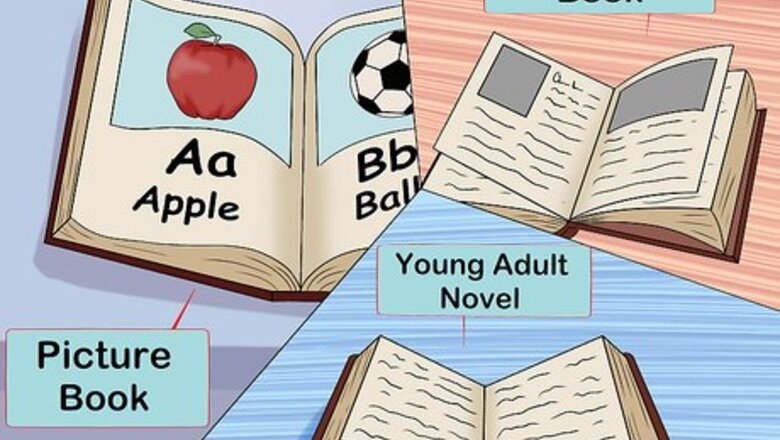
views
Preparing to Write
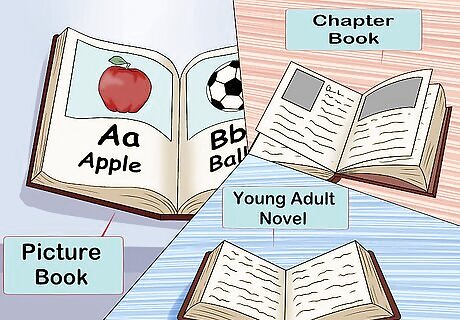
Understand the structure and form of a children's story. There are strict industry standards for word count in books for children. There are several types of children's stories, including: Picture books: These books are made for children up to age eight and average 500-1000 words. Picture books contain an image on every page and are published in larger trim sizes, 8.5” x 11”. These books can be written at a higher reading level than the age of the intended audience, as they are often read to a child by an adult. Easy reader books: These books are made for children ages five to nine and are usually 50-2500 words. The word count will depend on the publisher and the reading level of the intended reader. Chapter books: These are short novels for children ages seven to ten and are typically 10,000-12,000 words. Middle grade novels: These books are made for children ages eight to twelve and hover around 20,000-25,000 words. Young adult novels: These books are made for children ages twelve and up and are usually 35,000 to 45,000 words.
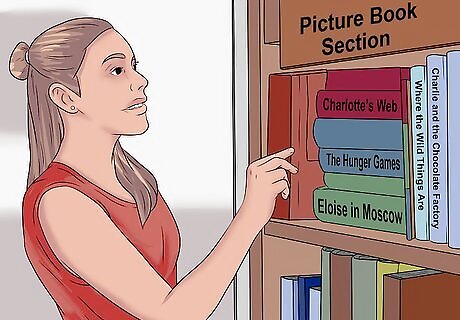
Read examples of children's stories. Focus on examples of children's stories that are at the reading level you would like to write for. If you're interested in creating picture books, head to your local library and go through the picture books section for possible examples and models. Easy reader books and middle grade novels are often written in a series, with multiple titles that revolve around a main character. Some good examples of children's stories include: Where the Wild Things Are, by Maurice Sendak. This 1963 picture book is one of the most well known and beloved children's stories. Eloise in Moscow, by Kay Thompson. This easy reader book is the fourth in a series about the adventures of six-year old Eloise. Charlotte's Web, by E.B. White. A classic chapter book that touches on major themes like grief and the wonders of friendship. Charlie and the Chocolate Factory, by Roald Dahl. A classic middle grade novel with a cast of eccentric characters and an engaging plot. The Hunger Games, by Suzanne Collins. A well known young adult series, comprised of three novels that follow the trials and tribulations of Katniss Everdeen.
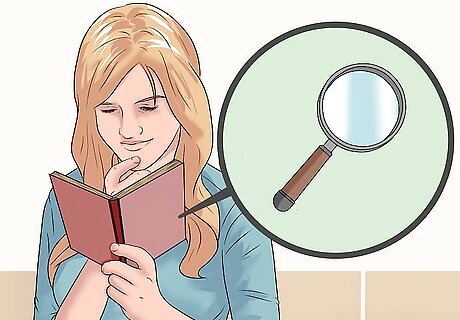
Analyze the examples. Choose one to two examples of books that are written in your chosen reading level. As you read through them, ask yourself several questions: Does the book effectively use its reading level to its advantage? For example, in Where the Wild Things Are, Sendak creates a story that is enjoyable for adults and children to read. This works well as picture books are often read by adults to children. Sendak uses the reading level to appeal to a variety of readers. What genre does the book fall into? The Hunger Games would be considered a dystopian young adult novel, which is part of the science fiction genre. In dystopian novels, the setting is a futuristic universe where an oppressive societal control and the illusion of a perfect society are maintained through totalitarian control. In The Hunger Games, this is the Capitol, led by the oppressive Professor Snow, which is opposed by Katniss. Is there a positive message, theme, or moral in the book? In Charlotte's Web, the moral of the book centers on the friendship between the spider, Charlotte and the pig Wilbur. Loyalty is also a big theme of the book, as Charlotte and Fern try to figure out a way to save Wilbur from being slaughtered. How does the writer make the main character interesting and engaging for readers? In Charlie and the Chocolate Factory, the main character, Charlie Bucket is a sympathetic protagonist. He is unassuming and respectful towards the other characters, lives a poor and undernourished life, and seems deserving of a golden ticket to Mr. Willy Wonka's chocolate factory. Is there an unexpected twist or payoff at the end of the book? In Charlie and the Chocolate Factory, the unexpected twist at the end of the books occurs when Charlie is the last child standing after a day in Mr. Wonka's factory. It is then revealed the entire visit has been a test to find Mr. Wonka's successor as the owner of the factory. How does the writer use word choice and simple language in the book? Compare a picture book, such as Where the Wild Things Are, to a young adult book, such as The Hunger Games. Note how the picture book uses an image on each page, as well as only one or two sentences per a page, to tell a story. A young adult book has no images, and uses long blocks of text, broken up by dialogue, and separated into chapters. As well, a picture book will only use very simple words and terms for a pre-school reading level, while a young adult novel will use marginally complex words and terms for a grade 10-12 reading level.
Creating a Story Idea
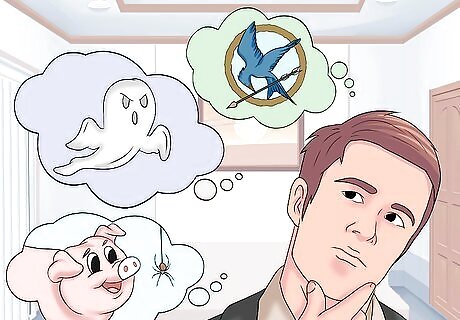
Choose your genre. There are many types of fiction, from fairytale to fantasy to historical fiction to horror to humor. Some writers begin with a story idea or a character first, rather than a genre. But it can help to pick your genre before outlining your story idea. Popular genres for children's stories include: Fables, which are stories that have a moral ending. Many fables for children use animals and inanimate objects to portray a theme or moral. For example, The Thomas the Tank Engine book series. Folktales, which are stories about commonplace events and characters that seek to explain things in life like nature, or the human condition. There may be make believe elements, like talking animals or natural elements like trees or rivers, as well as supernatural elements. For example, Dragonology: The Complete Book of Dragons. Historical fiction, which are stories that portray a time period or historical event. For example, a young adult novel about the life of Abraham Lincoln called Chasing Lincoln's Killer. Modern fantasy, which are imaginative tales that require young readers to accept elements and story lines that clearly cannot be true. They require readers to suspend their disbelief and engage with talking animals, elements of science fiction or the supernatural. For example, Charlotte's Web or Alice in Wonderland. Dystopian tales, which are a form of science fiction that uses an exaggerated worst-case scenario to critique a current trend, societal norm, or political system. For example, The Hunger Games or The Divergent series. Realistic fiction, which are books written around contemporary issues or real-world situations. This genre is similar to historical fiction, but it is based in current events. For example, a young adult novel about terrorism in America or race issues in the deep South.
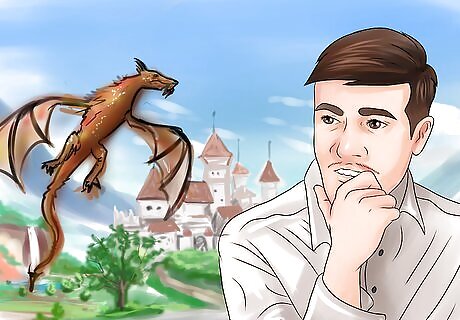
Determine the setting of the story. Often, the setting of your story will inform the details of your main character and the genre you are writing for. Think about an area you know well, such as your town or city, or a geographical area you would like to learn more about. You will then need to research certain elements of the setting to ensure it seems believable and clear to your reader. If you are writing historical fiction for children set in a certain time period, you will need to do some research about that time period. If you are writing dystopian fiction or a folktale, you can use your imagination to create a unique and slightly futuristic or supernatural setting. In children's stories, there is no limit to setting. From a spaceship on Mars to a pirate ship in the Caribbean, all these settings can be used for your story.
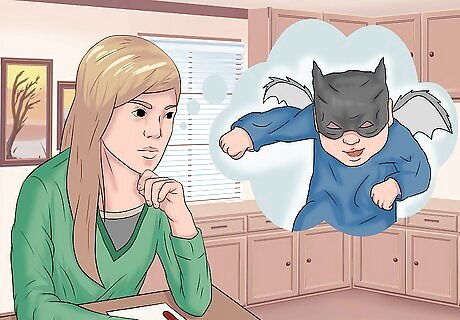
Create an engaging main character. Your protagonist, or main character, is going to act as a guide for your reader as they read your story. Your main character should be interesting and endearing enough that your reader cares what happens to her. Main characters in children's stories are often the same age as the readers, and are typically other kids or animals. Rarely, adults or inanimate objects are also used as main characters in children's stories. Consider how you can make your main character unique. For example, maybe they have a special ability or power, such as a photographic memory like Encyclopedia Brown of the Encyclopedia Brown chapter book series, or a strong and powerful personality, like Katniss Everdeen in The Hunger Games.
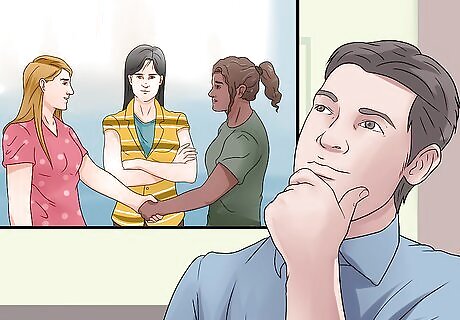
Think about the theme or moral of the story. What is the positive message the story is trying to convey to the reader? This could come down to simple morals, like beauty is in the eye of the beholder, the power of friendship, doing unto others as you would want for yourself, or doing the right thing means sacrifice and hard work. Many children's stories use a simple moral to structure the story and place the main character in a situation that causes them to realize the moral or theme. Many main characters use their skill or ability to get out of a potentially bad or tricky situation, such as a dystopian government. You may also use an imaginative setting to show the reader a moral or theme, such as the value of punishment and the value of dreams for the main character, Max, in Where the Wild Things Are.
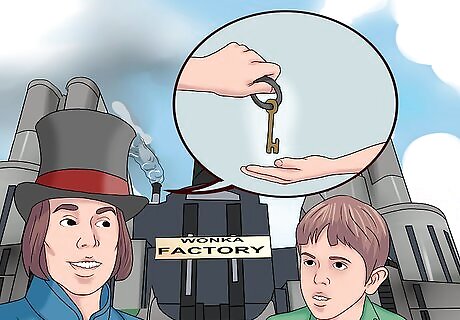
Create a satisfying twist. A satisfying ending acts as an unexpected surprise that completes the child's reading experience. Think of it as the cherry on top of a good story. A twist or payoff should occur at the end of the story and be surprising to the reader. For example, in Charlie and the Chocolate Factory, Dahl keeps the reader entertained with unique characters, a strange and interesting setting, and situations where characters meet their demise in intriguing ways. By the time the other children have been eliminated through their own greed and gluttony, the reader and Charlie both realize there is only one child left. The payoff then occurs when we find out Mr. Wonka was using the visit to the factory as a test to find his successor and the future owner of the chocolate factory.
Writing Your Story
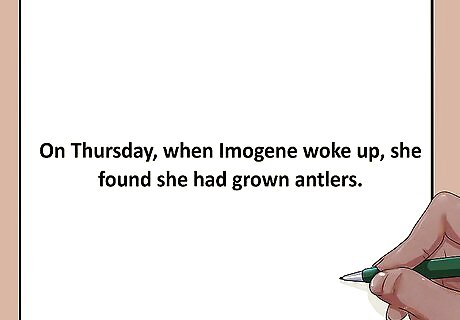
Dive right into the conflict. Make those first several sentences count. Begin with action, dialogue, or a description that sets the mood of the story. Start as close as possible to the story's catalyst, or the aha moment for the main character. This is the moment where your main character's life shifts from ordinary to extraordinary and the plot of the story takes off. For example, on the first page of the picture book Imogene's Antlers, the first sentence starts right in conflict: “On Thursday, when Imogene woke up, she found she had grown antlers.” Imogene's matter of fact reaction, placed next to the illustrations in the book, create an intriguing image to begin the story.
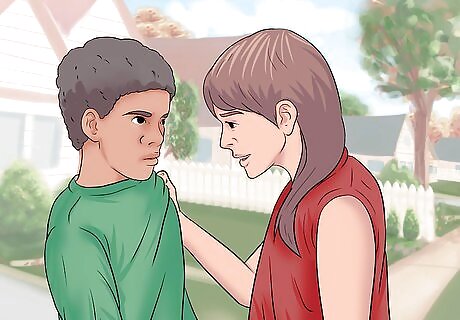
Let your main character get in trouble. Part of creating tension and interest in a story is letting your main character make a mistake or get in trouble. This will allow your character to change or shift by the end of the story and keep your reader engaged. Gauge how much trouble your character should get into based on the age group you are writing for. A four year old boy atoning for not eating his vegetables by being forced by his mother to fight to the death? Probably not an appropriate level of trouble. But a 16 year old girl living in a dystopian future where she is forced to fight to the death for her family? More of an age appropriate level of trouble for your main character.

Don't let adults solve the child's problem. When writing for children, one big mistake writers make is allowing adults to come in a solve all the kid's problems for them. Most child readers want to have a child protagonist who can solve their own issues or use adults only when necessary. Though parents can be involved, they should remain in the background or the peripheral of the main story. Let your main character work out the problem for themselves and don't rely on authority figures to solve all the issues or provide the answers. Having strong children characters will be empowering for young readers. It tells children that if the child character could work out a solution to a problem, maybe they can too.
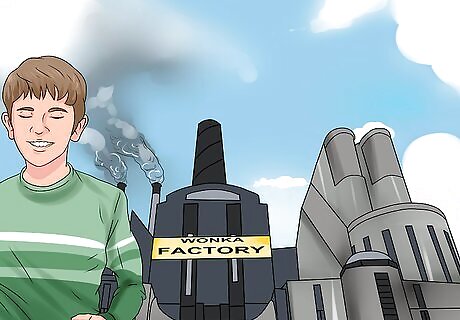
Use description to reveal character. Descriptions should show how your protagonist operates within the setting or how they feel about the other characters. Try to interpret all the details of a setting or scene through the eyes of your main character. For example, in Charlie and the Chocolate Factory, the narrative is in the third person, but it stays very close to Charlie's perspective. The narrative describes Charlie's walk home past the chocolate factory as “every day, as [Charlie] came near to it, he would lift his small pointed nose high in the air and sniff the wonderful sweet smell of melting chocolate.” This tells the reader about Charlie's appreciation of the factory, gives some physical description of Charlie, and shows Charlie's isolation from the factory, as he can only smell the wonderful chocolate rather than eat it himself.

Use realistic dialogue. The dialogue in your story should also match the age and perspective of your main character. If you are writing from the perspective of a seven year old girl, for example, you likely will not be using terms like “utilize” “pontificate” and “summarize”. Instead, you may use basic terms that are easy for a seven year old reader to understand and which seem more likely to come out of a seven year old's mouth. In Where The Wild Things Are, Sendak gives the monsters a unique voice, and uses punctuation, such as exclamation marks, to mark their speech. However, the monster still use simple terms that are easy for children and adults to understand. For example, “Let the wild rumpus begin!” and “Oh, please don't go-we'll eat you up, we love you so!”

Keep your reading level in mind when using adjectives and adverbs. A few adjectives and adverbs are fine for children's books written for a higher age level, from chapter books to young adult. But avoid packing your sentences with modifiers, as strong verbs can often work better than lots of adjectives and adverbs. In children's stories, especially chapter books and young adult books, writers often use strong verbs to convey physical and emotional qualities of the characters or of a setting or scene. For example, in a passage from The Hunger Games, Collins uses strong verbs to convey a sense of action and tension. “A boy, I think from District 9, reaches the pack at the same time I do and for a brief time we grapple for it and then he coughs, splattering my face with blood. I stagger back, repulsed by the warm, sticky spray. Then the boy slips to the ground.” Using verbs like “reaches” “grapple” “stagger” “slips” creates a strong image in the reader's mind, without confusing them or jolting them out of the story. However, notice that Collins does not use any adverbs, but still creates strong sentences. She appeals to the reading level, without sacrificing any tension in the story.
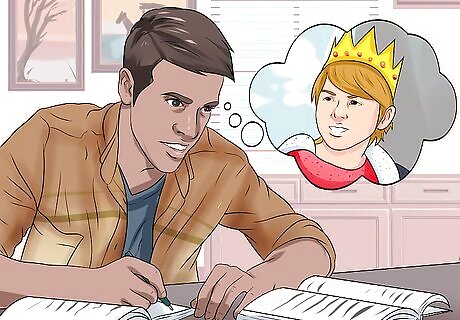
Write to images or visuals. Remember that most children's stories, particularly picture books and easy reader books, are illustrated. Keep the visuals of the book in mind as you create the story. In many picture books, the illustrations must be just as effective as the words on the page and their should be a strong connection between the images and text. For example, Where the Wild Things Are is known as much for the text and the story as it is for the illustrations, which bring the monsters of Max's imagination to life for the reader.
















Comments
0 comment